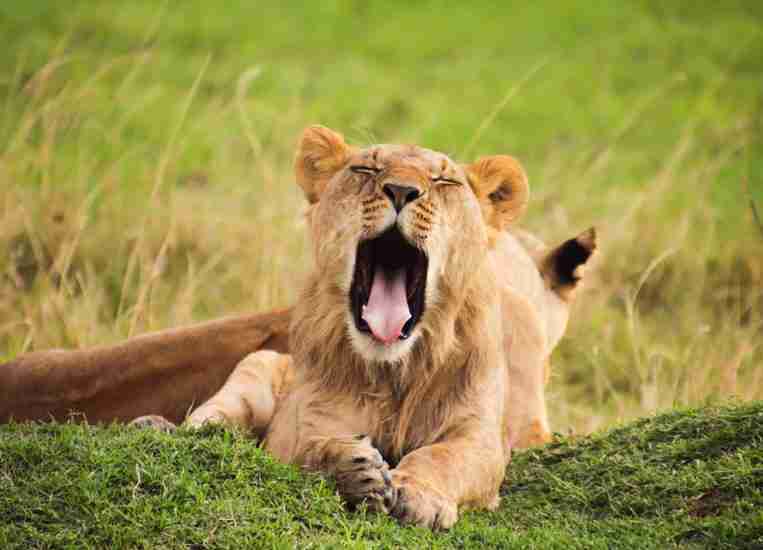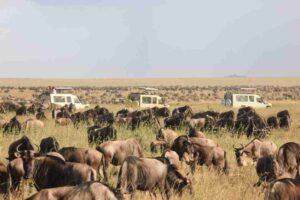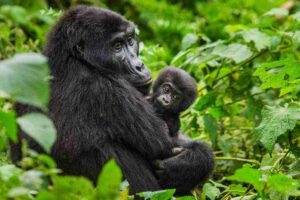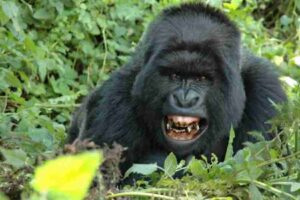The allure of seeing big cats, such as lions, leopards, and cheetahs, on an African safari stems from several factors:
- Iconic Status: Big cats are some of the most iconic and recognizable animals in the world. They feature prominently in wildlife documentaries, books, and media, capturing the imagination of people around the globe.
- Symbol of Wilderness: Big cats are often viewed as symbols of the wilderness and the untamed beauty of Africa. Seeing these majestic predators in their natural habitat evokes a sense of awe and wonder at the power and grace of nature.
- Thrilling Encounters: Witnessing a big cat in the wild is an exhilarating and unforgettable experience. Whether it’s watching a lioness on the hunt, observing a leopard lounging in a tree, or witnessing a cheetah sprinting across the savanna, these encounters offer a thrilling glimpse into the world of predators and prey.
- Predator-Prey Dynamics: Big cats play a crucial role in maintaining the balance of ecosystems. Their presence influences the population dynamics of prey species, shaping the structure and functioning of entire ecosystems. Seeing big cats in action provides insight into the intricate relationships between predators and their environment.
- Photographic Opportunities: Big cats are popular subjects for wildlife photographers, thanks to their striking appearance and captivating behavior. Safari-goers often hope to capture the perfect shot of a lion’s mane, a leopard’s stealthy approach, or a cheetah’s lightning-fast chase.
- Bucket List Experience: For many people, seeing big cats on an African safari is a bucket list experience, representing a lifelong dream or ambition. It’s an opportunity to connect with nature in a profound and meaningful way, leaving a lasting impression and cherished memories.
Overall, the desire to see big cats on an African safari reflects a fascination with the natural world and a deep appreciation for the beauty and diversity of wildlife. It’s a testament to the enduring allure of Africa’s wild places and the majestic creatures that inhabit them.
East Africa’s wild places rank among Africa’s best places to see lions, leopards and cheetahs. These are the carnivores that bring the savannah alive, the apex predators that bring fear and frisson to vast herds of prey wildlife and safari-goers alike, animating the East African plains by their mere presence. And if you know where to look, you may just see all three in a single day.
MASAI MARA NATIONAL RESERVE – #KENYA -BIG CAT DIARY:
The Masai Mara is a safari cliché and there’s a very good reason that the BBC filmed its classic Big Cat Diary here. Lion prides stalk the plains, building their family groups twenty and thirty strong around the river confluences and marshes that dominate the central Mara. Leopards keep to the riverine edges, waiting for the time when zebra and wildebeest inevitably, reluctantly come down to drink. And cheetahs, the bottom of the big cat food chain, scan the horizon from their termite mound vantage points.
TSAVO EAST & WEST NATIONAL PARKS- #KENYA. LAND OF THE MAN-EATERS OF TSAVO’
Kenya’s biggest park is also arguably its wildest, an epic, red-soil territory of rugged mountains, endless plains and palm-fringed rivers. It was in Tsavo that the legend of man-eating lions was born in the late nineteenth century, and it remains a stronghold of lions – the two Tsavo parks are home to an estimated 700 lions, one-third of all lions in Kenya. Tsavo West is renowned for its leopards, while in Tsavo East cheetahs are commonly seen on the plains east of the Aruba Dam.
AMBOSELI NATIONAL PARK – KENYA.
The Amboseli ecosystem is famous for its elephants set against a backdrop of Mount Kilimanjaro, but lions and cheetahs are also commonly sighted here throughout the dry season.
LAKE NAKURU NATIONAL PARK – KENYA.
As Kenya’s human population crowds ever closer, parks like Lake Nakuru have become islands in a vast sea of humanity. Inhabiting this island, one of the country’s most compact parks, is a rare population of tree-climbing lions. Lake Nakuru is also one of the best places in Kenya to see leopards. The lesson of Lake Nakuru is, therefore, simple: look up into the branches as or you might miss the cats altogether.
RUAHA NATIONAL PARK- TANZANIA.
Chances are that you’ll have lion sightings completely to yourself at Ruaha. Hidden away in southern Tanzania, Ruaha National Park sees fewer than 6 000 visitors a year – or about 16 a day – which makes it one of Africa’s hidden treasures.
SERENGETI NATIONAL PARK- TANZANIA.
Millions of wildebeests joined by tens of thousands of zebra and gazelle provide the perfect meal for lions in the Serengeti-Mara ecosystem. The Grumeti Game Reserve in the west and the central Seronera region are some of the best spots in the Serengeti National Park to see lions.
NGORONGORO CRATER – TANZANIA:
If you’re looking for some of the easiest and most rewarding game viewing in East Africa, then head down onto the floor of the world’s largest inactive volcanic caldera. Home to about 30 000 animals – including powerful lions – the Ngorongoro Crater delivers an incredible Big 5 safari experience in an extraordinary setting.
LAKE MANYARA PARK – FAMOUS FOR TREE-CLIMBING LIONS
Lake Manyara is worth visiting for its excellent lion sightings. Lake Manyara Park is famous for its tree-climbing lions, a feline behviour usually displayed by leopards.
KIDEPO VALLEY NATIONAL PARK: UGANDA.
It is the only park in Uganda with an increasing lion population. Kidepo Valley Park was named the number 3 park in Africa. In December of 2015, CNN called Kidepo Valley Park the best destination and the best Destination it is, a park where you will find an Africa as it was 50 years ago.
QUEEN ELIZABETH NATIONAL PARK: UGANDA.
Most visitors to Queen Elizabeth will see lions in the northern area such as the Kasenyi Plains. This is a very fruitful area for those on a photographic Lion Hunt.
MURCHISON FALLS NATIONAL PARK: UGANDA
Most visitors spot some lions while on a game drive here and unlike in other places – it does not take long from your lodge to the game tracks.
AKAGERA NATIONAL PARK – #RWANDA:
Though more known for mountain gorilla safaris, Rwanda is also not left out the lion bonanza with Akagera national park as her savannah reserve puts her on the same footing with Tanzania, Kenya, and Uganda. Akagera today boasts the presence of the big five within its boundaries after the introduction of seven lions in 2015 from South Africa that included two males and five females. Later in 2017, more two males were also brought in and they have settled in comfortably. Since the reintroduction, about a dozen cubs hav














